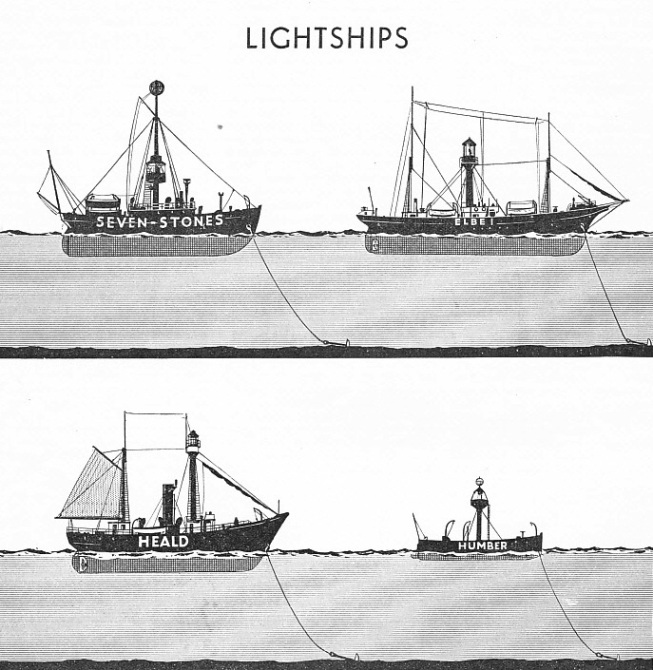

© Shipping Wonders of the World 2012-

Lightships

LIGHTSHIPS are employed to mark sandbanks or other obstructions to navigation where it is impossible to erect a stone or steel lighthouse. Their design and arrangement vary with different countries and duties, as will be seen.
The Seven Stones light is one of the older British lightships maintained by Trinity House. She is non-
The Elbe light is a German example marking the entrance to the port of Hamburg. Self-
The Heald is a characteristic American lightship guarding the Heald Bank shoal, and she is self-
The Humber light is automatic and unattended. The lantern, with distinguishing mark on the top, is on a steel mast; the hull is of the barge type. Simple anchoring is shown, to denote that the vessels are moored; in practice lightship anchoring is elaborate.
You can read more on “Buoys and Beacons”, “Day and Night Signals at Sea”,
“Signalling at Sea” and “The Work of Trinity House” on this website.